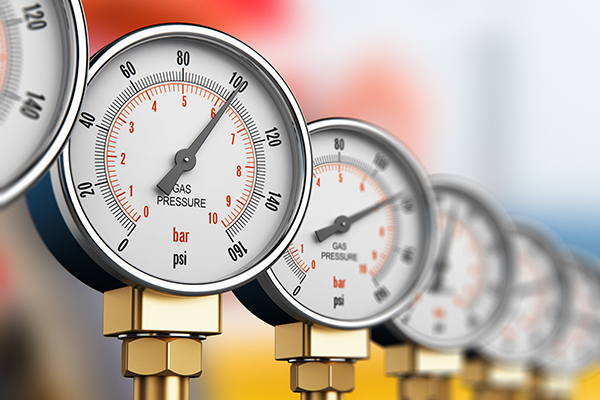There are several benefits to using natural gas as an industrial energy source, from cost-efficiency to sustainability. Find out more.

As the world becomes more and more industrialized, the need for a reliable energy source to fuel various production processes becomes increasingly important. While a simple Bewitched-style twitch of the nose would prove beneficial in powering our devices eternally, until that art is mastered, we’ll need to consider other options.
Natural gas is considered a great alternative to more damaging energy sources such as oil and coal. It’s a naturally occurring hydrocarbon that’s formed deep below the earth’s surface, and includes methane, nitrogen, carbon dioxide, and other hydrocarbons within it. Not only can it be used to fuel power stations that keep homes and businesses heated, cooled, and cooking, but it’s also become a trusted energy source for many industrial processes. The benefits of adopting natural gas as a reliable energy source don’t, however, end there.
Read on for some more advantages of natural gas:
The diversity and flexibility of natural gas allows for it to be used within several industries.
Industrial processes include that can rely on natural gas include:
As explored by Florida natural gas companies, natural gas is not only colorless and odorless, it’s also non-toxic and non-carcinogenic. It’s generally believed to be one of the safest fossil fuels to use in both industrial and domestic settings. Due to the substance being lighter than air, if a gas leak were to occur, it would disperse more easily than other sources of energy. While there are risks and dangers to be aware of, it still remains a safer option.
One perk of using natural gas as an industrial energy source is that it’s considered to be plentiful. According to the Millennium Alliance for Humanity and the Biosphere (MAHB), if you understand the current demand, production, and estimated number of natural gas reserves, the world can expect to enjoy this substance for at least another 52.8 years. This length of time can, however, be extended to reach the year 2060 if natural gas production is increased after oil reserves are predicted to run dry. (3)
Due to the available nature of the gas, it’s also considered to be a good back-up plan in emergency situations. This was evident during the aftermath of the 2011 Fukushima nuclear accident in Japan. To keep up with electrical demand, utilities ended up importing large amounts of liquified natural gas (LNG). (4)
Fossil-fuel caused pollution remains a major concern. The desire to save the planet while also growing the economy through industrial efforts seems almost counterintuitive. According to a 2018 study published in the International Journal of Environmental Research and Public Health, an estimated 8.8 million people died in 2015 due to air pollution. If you wish to look after not only the earth but also the health of those around you, it’s wise to consider how industries as well as the everyday person can lessen their negative impact. (5)
LNG is considered to be a lower-emission alternative to diesel and other substances used to power transportation. According to Inspire Clean Energy, it emits between 15% and 20% fewer heat-trapping gasses than gasoline. The lower the emissions, the less air pollution. (6)
When comparing natural gas to coal, you find a similar result. Natural gas produces approximately half of the carbon dioxide (CO2) that coal does when burned to create electricity, and about one tenth of the air pollutants. (7)
Natural gas, may therefore, be a better alternative to powering your industrial machines and processes, if you consider the future of the environment to be a top priority.
According to the U.S. Energy Information Administration, the U.S. is close to producing all of the natural gas that it uses. In 2020, production hit a high of approximately 34.4 trillion cubic feet. Domestically produced gas comes with its own set of perks, including the support offered to local companies as well as cost-efficiency which will be further explored below. (8)
Less reliance on foreign resources is also a major advantage to having natural gas be locally produced. If a country depends on another for its energy, they’re forced to maintain a positive relationship. Considering the volatile nature of the world at the moment, producing one’s own well-needed resources is wise.
As mentioned above, the abundance of U.S.-produced natural gas directly impacts its affordability. The greater the supply, the significantly lower the consumer cost.
On an industrial scale, utilizing natural gas may also prove more cost effective and offer the following benefits:
Natural gas production (especially domestic) is a great contributor to job creation and ultimately a thriving economy. In recent years, for example, almost 200,000 job opportunities were made available in Texas and Pennsylvania due to the demand for natural gas. This equated to almost USD$13.7 billion in economic output. Local production of natural gas also tends to pay employees more than other jobs. (10)
Lowering the unemployment rate is an issue that many countries need to tackle. The growth and encouragement of natural gas use within the industrial sector may be the answer.
There are several advantages to using natural gas as an industrial energy source that span beyond the chemical’s non-toxic nature. Industries often opt for resources that are not only safer to use, but that are also cost-effective and environmentally friendly. Supporting local production and in turn increasing job opportunities is another perk to adopting natural gas.
References:
In this episode, I sat down with Beejan Giga, Director | Partner and Caleb Emerson, Senior Results Manager at Carpedia International. We discussed the insights behind their recent Industry Today article, “Thinking Three Moves Ahead” and together we explored how manufacturers can plan more strategically, align with their suppliers, and build the operational discipline needed to support intentional, sustainable growth. It was a conversation packed with practical perspectives on navigating a fast-changing industry landscape.